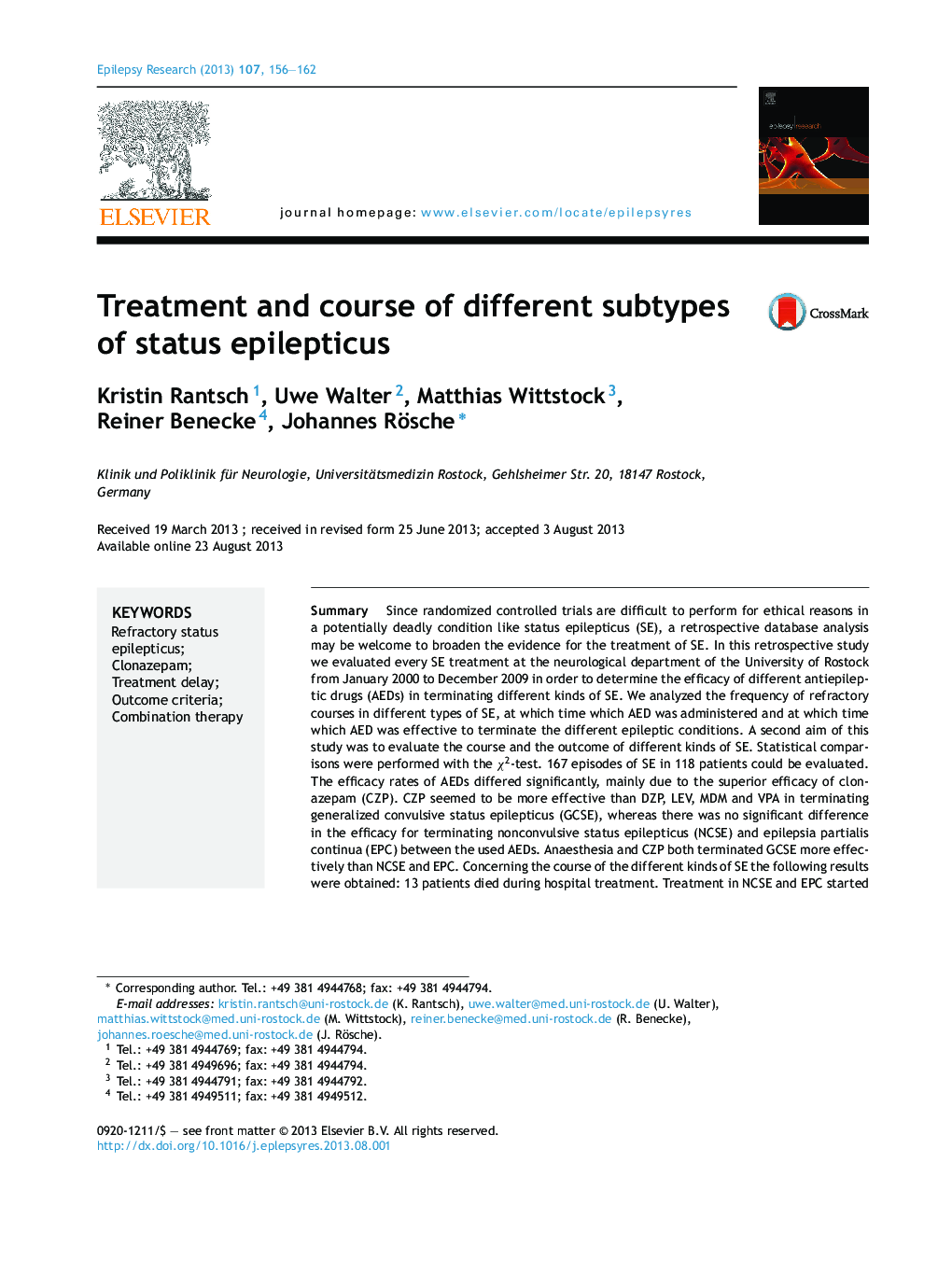| کد مقاله | کد نشریه | سال انتشار | مقاله انگلیسی | نسخه تمام متن |
|---|---|---|---|---|
| 6015860 | 1579915 | 2013 | 7 صفحه PDF | دانلود رایگان |
- Frequency of refractory courses differs between the types of status epilepticus.
- No drug works better than Clonazepam in generalized convulsive status epilepticus.
- Narcosis works better in generalized convulsive status epilepticus than in others.
- Clonazepam works better in generalized convulsive status epilepticus than in others.
SummarySince randomized controlled trials are difficult to perform for ethical reasons in a potentially deadly condition like status epilepticus (SE), a retrospective database analysis may be welcome to broaden the evidence for the treatment of SE. In this retrospective study we evaluated every SE treatment at the neurological department of the University of Rostock from January 2000 to December 2009 in order to determine the efficacy of different antiepileptic drugs (AEDs) in terminating different kinds of SE. We analyzed the frequency of refractory courses in different types of SE, at which time which AED was administered and at which time which AED was effective to terminate the different epileptic conditions. A second aim of this study was to evaluate the course and the outcome of different kinds of SE. Statistical comparisons were performed with the Ï2-test. 167 episodes of SE in 118 patients could be evaluated. The efficacy rates of AEDs differed significantly, mainly due to the superior efficacy of clonazepam (CZP). CZP seemed to be more effective than DZP, LEV, MDM and VPA in terminating generalized convulsive status epilepticus (GCSE), whereas there was no significant difference in the efficacy for terminating nonconvulsive status epilepticus (NCSE) and epilepsia partialis continua (EPC) between the used AEDs. Anaesthesia and CZP both terminated GCSE more effectively than NCSE and EPC. Concerning the course of the different kinds of SE the following results were obtained: 13 patients died during hospital treatment. Treatment in NCSE and EPC started significantly later than in GCSE. There was no significant difference in mortality between the types of SE. However the frequency of refractory courses differed between the types of SE. At the time of SE termination without the administration of anaesthesia a combination therapy using 2 or more AEDs was established in most episodes.
Journal: Epilepsy Research - Volume 107, Issues 1â2, November 2013, Pages 156-162
